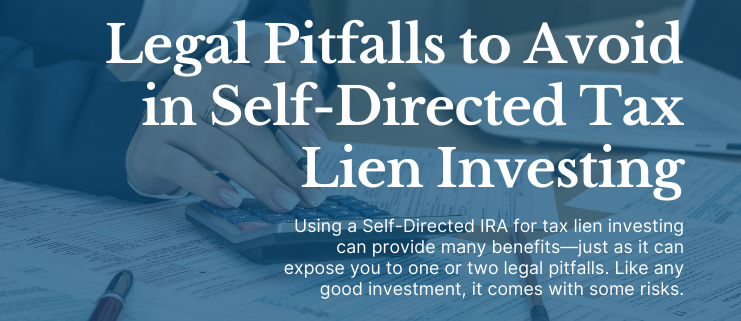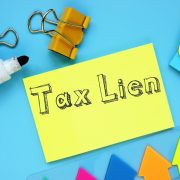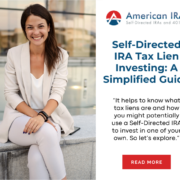Legal Pitfalls to Avoid in Self-Directed Tax Lien Investing
A tax lien is not the typical path to wealth. Yet why shouldn’t it be? Investing in a tax lien gives you an asset that can collect passive income or even turn into a real estate asset. But using a Self-Directed IRA for tax lien investing can provide many benefits—just as it can expose you to one or two legal pitfalls. Like any good investment, it comes with some risks. So let’s explore the world of tax lien investing and how you can avoid those pitfalls with rock-solid habits:
Understanding Tax Lien Investing in Self-Directed IRAs
Let’s start with a definition. What is tax lien investing? It means buying liens placed on properties by local governments, which happens when property owners fail to pay their taxes. These liens are sold at auctions to the highest bidder. In this case, that bidder might be you. You then have the right to collect the owed taxes plus interest. If the property owner doesn’t pay within a certain period, you can potentially foreclose on the property.
This might sound straightforward. But it’s still critical to know the legal landscape if you’re going to avoid costly mistakes. With Self-Directed IRAs, the stakes are even higher because any missteps can jeopardize the tax-advantaged status of your IRA.
Legal Pitfalls to Avoid
Prohibited Transactions
The IRS has strict rules about what counts as a prohibited transaction within Self-Directed IRAs. An example? Let’s explore a few. Prohibited transactions can include dealing with disqualified persons, such as yourself, certain family members, or entities you control. For example, if you or a disqualified person personally benefit from the tax lien investment, the IRS can deem it a prohibited transaction. And when this happens, you lose the tax benefits that were the point of Self-Directed IRA investing in the first place.
Unrelated Business Taxable Income (UBTI)
Income generated from certain investments within an IRA can be subject to Unrelated Business Taxable Income (UBTI). Tax lien investing can sometimes trigger UBTI. After all, tax liens are similar to real estate investing. For example, if the IRA takes an active role in managing the properties associated with the liens, this could generate UBTI. Understanding the nuances of UBTI and structuring your investments to minimize this tax will be critical for your account. Our recommendation? Consult with a tax professional familiar with Self-Directed IRAs.
Local Laws
Tax lien investing is about local taxes, which means local rules. Each state has its own rules for tax lien auctions, redemption periods, and interest rates. You need to stick to these regulations to avoid legal troubles and financial losses. Do your homework. Good, thorough due diligence will be essential to ensure that you’re fully aware of the specific legal requirements and risks associated with the tax liens you’re considering. What does due diligence look like? Research the the property’s status, any existing liens or encumbrances, and the likelihood of the property owner redeeming the lien.
Issues with Record-Keeping and Reporting
Maintain stellar—and we do mean immaculate—records. If this sounds hard, remember other people can help, like a Self-Directed IRA administration firm. Good record-keeping is a cornerstone of compliant tax lien investing within Self-Directed IRAs. Detailed documentation of all transactions, communications, and financial activities related to the investment is crucial. This not only helps in tracking the performance of your investments but also in providing evidence of compliance in case of an IRS audit.
By being aware of the common legal pitfalls and taking proactive steps to avoid them, you can leverage the benefits of tax lien investing within a Self-Directed IRA. Even better? You won’t risk the tax-advantaged status of your account. Interested in learning more about Self-Directed IRAs? Contact American IRA, LLC at 866-7500-IRA (472) for a free consultation. Download our free guides or visit us online at www.AmericanIRA.com.








